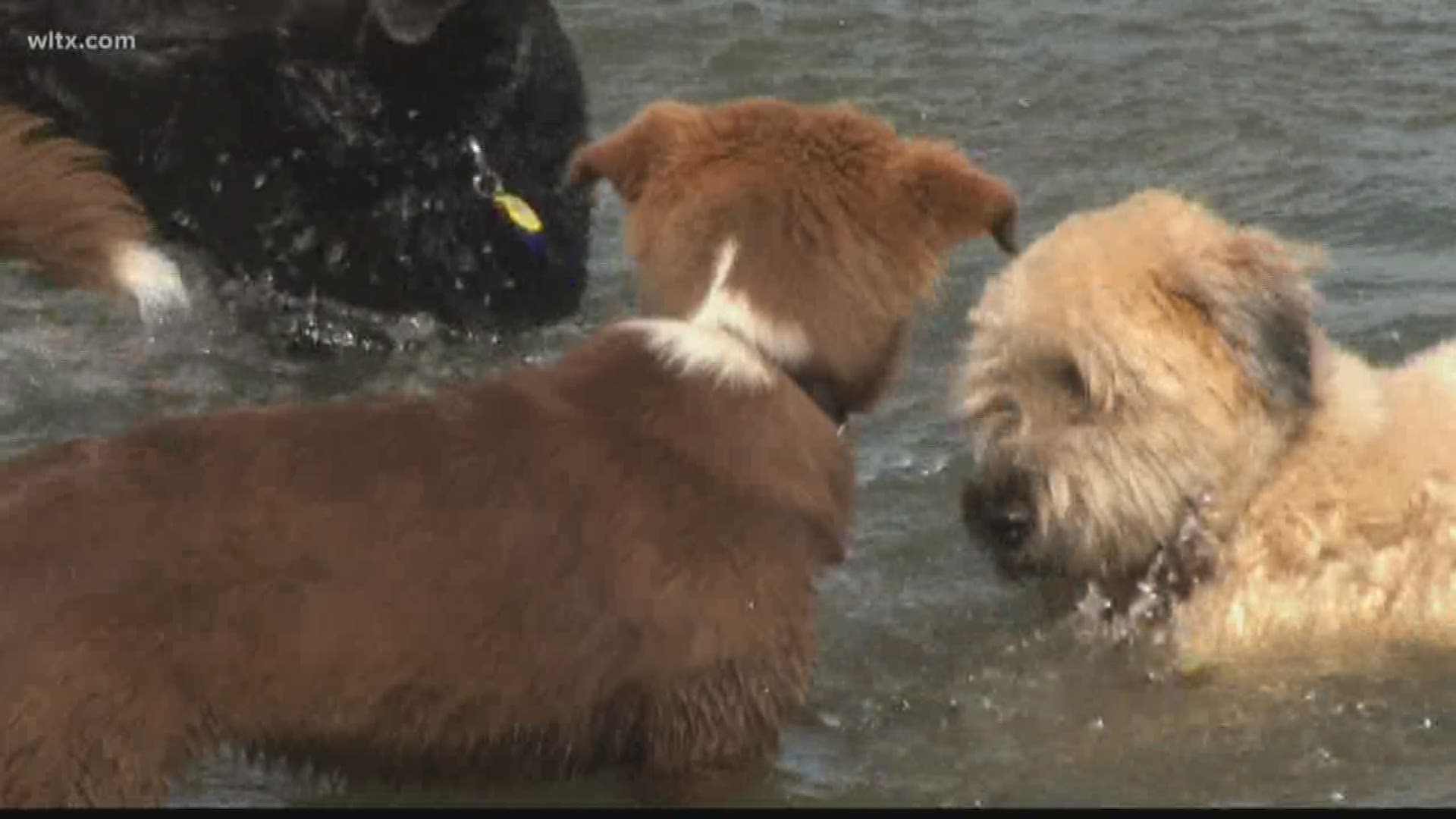COLUMBIA, S.C. — In Wilmington, just north of Atlanta, and even in Austin, Texas, dogs have been dying after swimming in different bodies of water.
This is all reportedly caused by a blue-green algae found in these bodies of water that produce toxins that are deadly to pets.
We spoke with emergency veterinarian Dr. Tracy Schlicksup at CVETS, an emergency vet in Columbia, about this toxic algae.
"Blue-green algae produces two different toxins through cyanobacteria. Essentially those two toxins can both cause liver failure and neurological signs. So, its not something that I would call one of our common toxins," Dr. Schlicksup told us. "There are many blue-green algae’s that don’t cause issues. There are some in particular to the one that happened in North Carolina and in Georgia that do produce toxins. The challenge with this toxin is that it usually produces clinical signs within 15-20 minutes, so its very quick. Sometimes you don’t even have enough time to access your local emergency hospital. And it can be very challenging to treat.”
Dr. Schlicksup told us blue-green algae thrives in hotter weather especially when there is no rain and also that it thrives primarily in water that is more stagnant.
“Realistically I think the way to approach it - if you are in areas where you see a pond that doesn’t have fast moving water, does have a lot of scum over the top of it- probably need to move toward a more fast flowing area," Dr. Schlicksup advises, "Rivers that are fast flowing, larger lakes, Lake Murray, those areas are not going to be the places of concern.”
Dr. Schlicksup says if you see your dog acting abnormally directly after playing in a body of water - there is not much you can do on site so you need to bring your animal directly to the hospital.
We asked the S.C. Department of Health and Environmental Control (DHEC) about this issue to which they gave us this statement:
"Blue-green algae, also known as cyanobacteria, live in manynatural waters and can produce harmful algal blooms (HABs). Several species of algae are known to produce toxins in fresh waters, and different toxins can affect humans and animals in different ways, from a skin rash to liver, kidney or nervous system damage.
"During warmer parts of the summer, HABs can discolor water or cause a layer of scum to appear on the water surface. HABs are typically found in small, shallow water bodies that warm up faster than larger bodies of water. But HABs can occur on larger reservoirs, especially in coves where water is shallower and can warm faster then deep parts of the lakes. If a water body looks discolored, has a foul odor, noticeable algal mats, or dead fish or other animals, it's advisable to not enter the water or allow pets or animals near these waters.
"If you or your pets encounter waters that possibly contain a HAB, immediately rinse with tap water and try to not let pets lick themselves before they're rinsed off. Seek immediate medical attention if illness occurs, for humans or pets.
"The CDC reports that “While no HAB-associated human deaths have been reported in the United States, many pet deaths (especially dogs) have been reported after the animal swam in or drank from water bodies with ongoing cyanobacteria blooms. Between 2007–2011, thirteen states reported 67 cases of cyanobacteria toxin-related illness in dogs to CDC. Over half (58 percent) of these cases resulted in death.”

